Perk Up with 6 Tasteful Malaysian Drinks
Lighten your mood and rejuvenate your senses with 6 must-try Malaysian drinks!
Discover the authentic in Asian cuisine food
Around the World, Asian Pantry, Fresh Produce
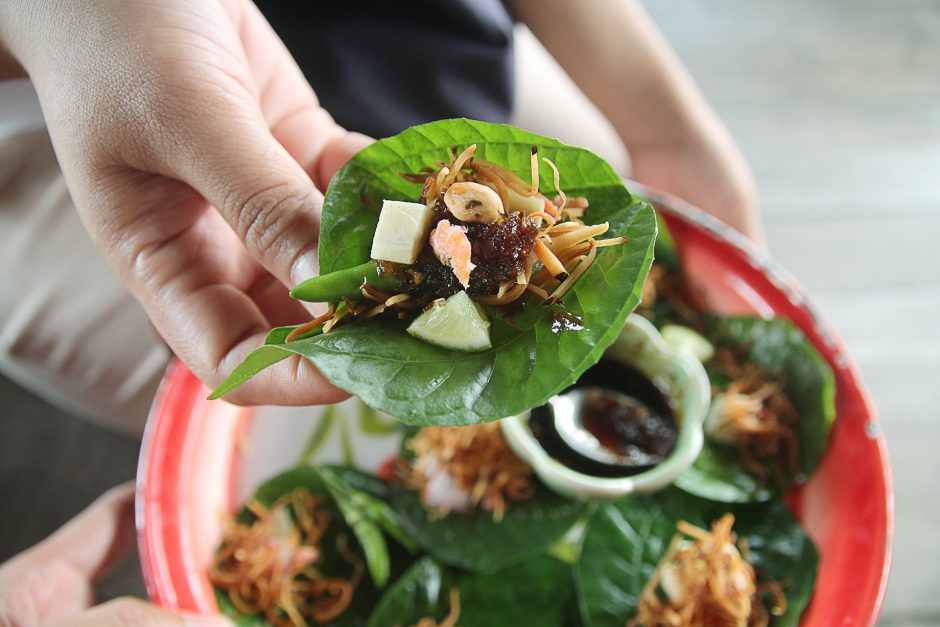
If there’s one common feature of Asian cuisines, it’s the incredible variety of ingredients, including the herbs and veggies that make up a major part of Asian food customs. These wholesome greens aren’t just essential nutrient providers, but also brings flavours, textures and aromas that are amazing to taste. In a typical Asian family meal, veggies are must-have compliments to meat and carbs, with their own iconic stir-fries, soups, salads and more.
And you should absolutely add them to your home-cook repertoire. Here are 10 unique Asian greens to look out for on your next visit to the grocers!
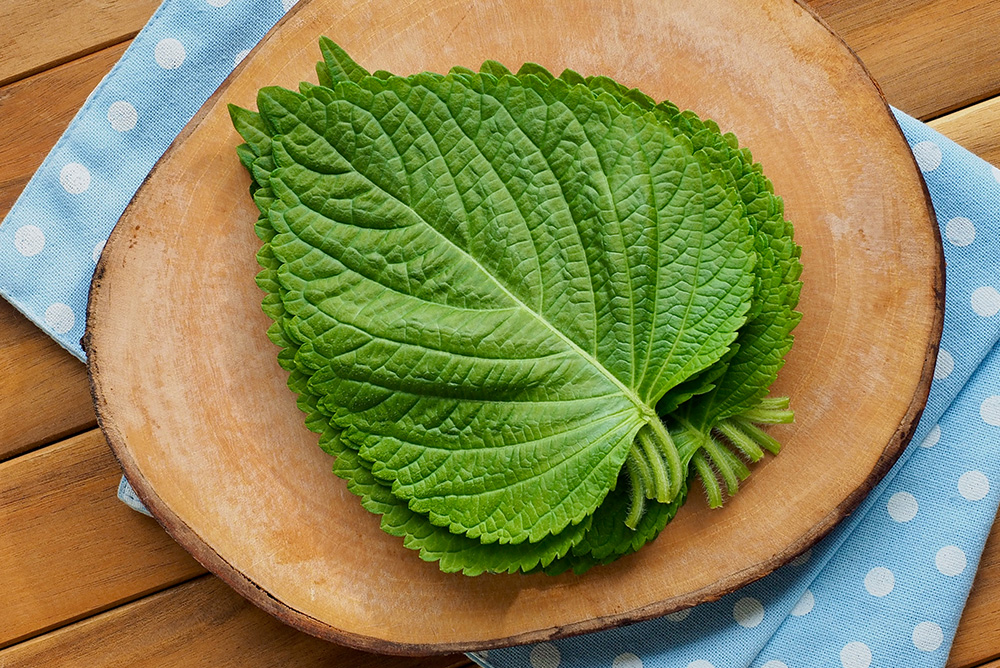
A Korean favourite for its pleasing grassy notes of anise-like flavour. Perilla contains compounds that provide anti-inflammatory benefits which reduces allergy symptoms, help prevent cancer and autoimmune diseases, and even ease depression. The big leaves allow for many ways to enjoy it, including Kimchi, Bulgogi wraps, spicy hot pot, stir-fried with meat, etc.
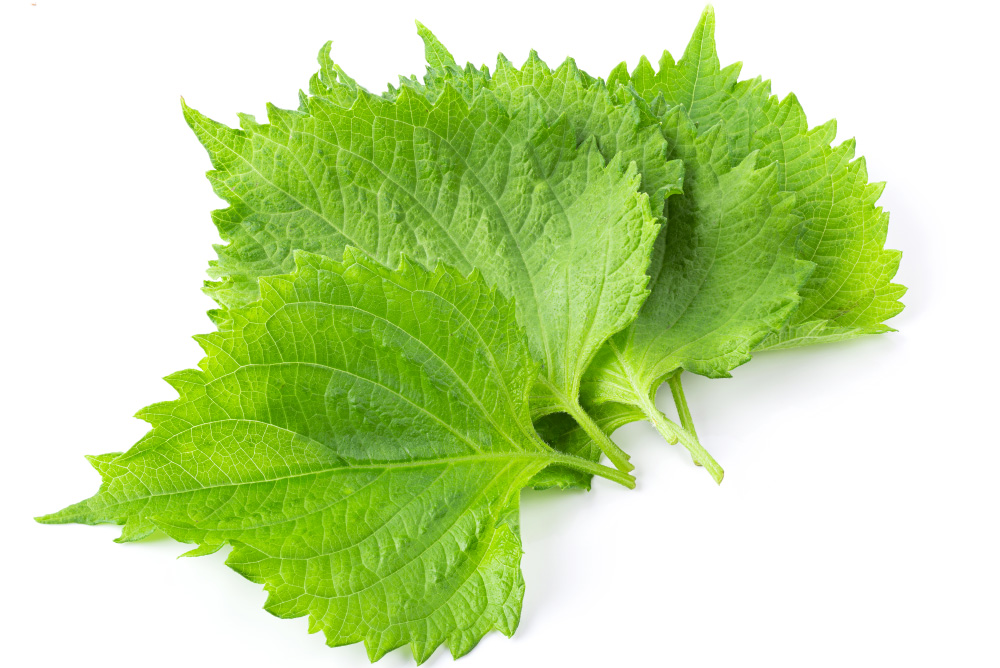
The Japanese variant of Perilla, with both green and red-purple leaves, as well as similar health benefits. Often used as garnish and a core ingredient in seasoning blends. Green Shiso tastes and smells like citrus and cinnamon, great for meat and seafood dishes. Red shiso has a spicier aroma akin to a lighter version of basil, mainly used for pickling or as a natural food colouring. Try it in mouth-watering prawn fritters, or this exquisite snapper sashimi.

The absolute must-have herb that practically defines the unique Thai food aroma. Holy basil has a strong clove-like fragrance, with sweet, lemony taste, and is a core ingredient in Thai green curry, noodle soups, salads, stir-fries and more delicious goodies. Just check out our collection of basil recipes. It’s also considered an awesome tonic with many medicinal and therapeutic uses, as well as vitamins and nutrients.
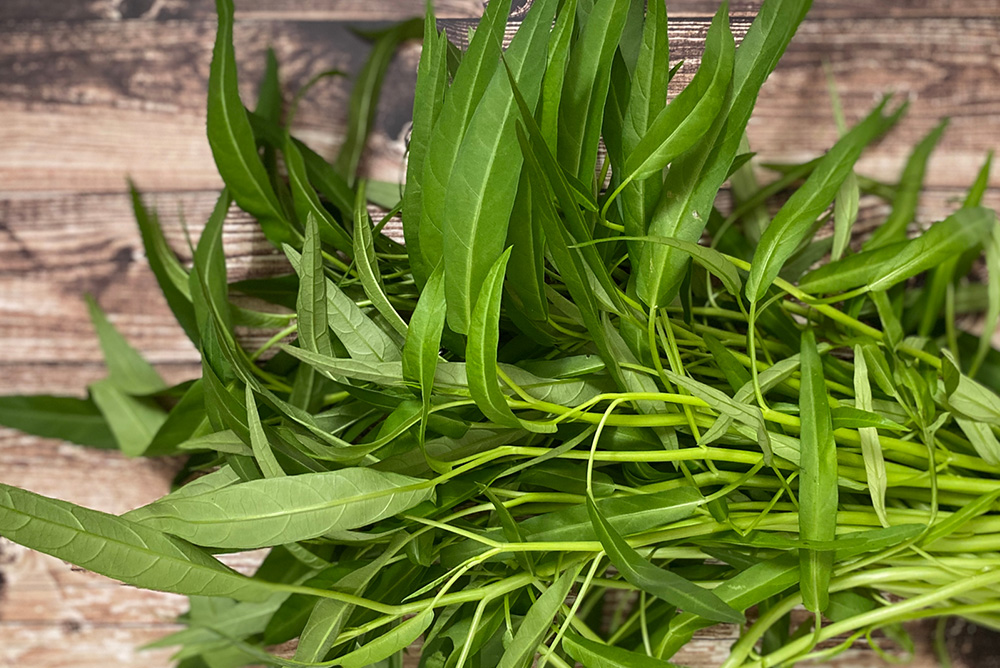
A Malaysian favourite known as Kangkung, most often stir-fry with spicy, savoury belacan for an appetizing dish. Also a key garnish ingredient for Penang prawn noodles. When cooked, the broad leaves turn tender, and the stems crunchy; with a ‘slurpy’ texture, and a mildly sweet and nutty, refreshing flavour. Superbly nutritious, Kangkung is low in calories and fats, packed with Vitamins A, B, and C, as well as antioxidants and minerals.
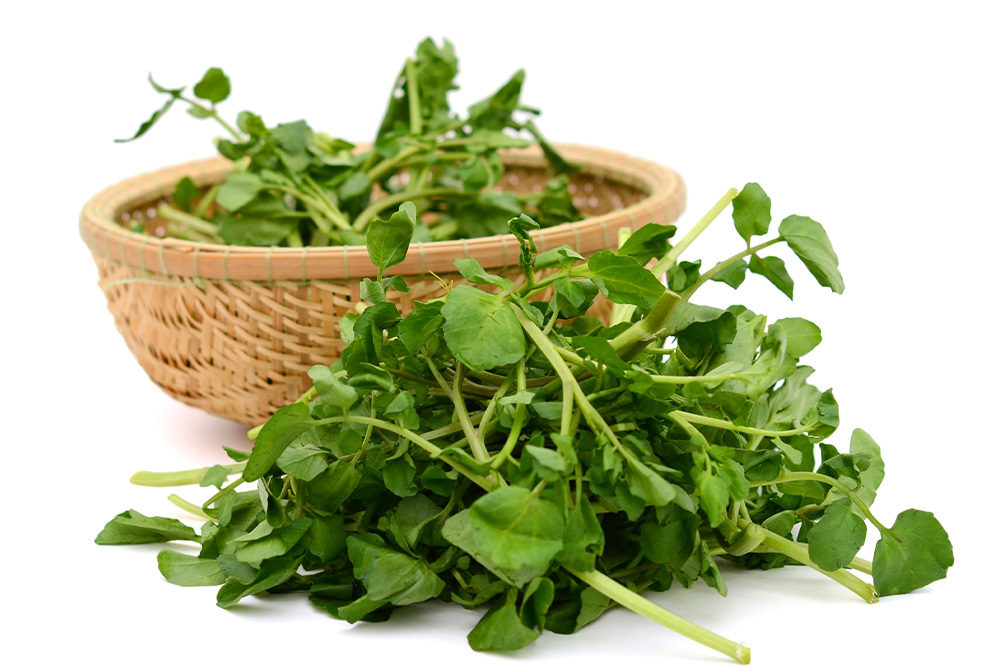
A healthy leafy veggie rich in Vitamins C and E, calcium and iron phosphate. Enjoyed in Vietnamese, Chinese, Korean and Japanese cuisines. Watercress has a basic, but versatile veggie taste and textures that goes well with almost any seasoning. Even a simple stir-fry with garlic and soy sauce makes a yummy addition to your meals. Savour it in a warm bone-broth soup, a simple Korean banchan side dish, sumptuous Vietnamese beef salad, or umami soba noodles and peanut sesame dressing.

Grassy, tender and delicate with a slightly bitter taste, mild crunchy texture, and distinct flowery aroma, Chrysanthemum Garland/Greens are a leafy veggie, commonly enjoyed in Asian hot pots and soups. It’s basically ‘the rest’ of the Chrysanthemum flower plant, minus the roots. The vibrant yellow flowers are most often dried to make a refreshing infusion tea, but are also edible raw in salads. The greens are easily cooked, just 20-30 seconds to boil in water, even faster if you chop them up, so they’re always added last to soups and hot pots. It contains antioxidants, potassium and even helps protect you from lung cancer. Savour it in soothing meatballs soup, zesty Sichuan noodles, or a warm and sumptuous Bulgogi stew.

A minty herb that tastes like celery, most favoured by Koreans as a medicinal herb called Ssuk, and key ingredient in a traditional soup, as well as rice cake. More than that, Ssuk is also a prominent element in Korean folklore behind the first Korean dynasty. It tells of a test from Hwanung, Lord of Heaven’s son, to a tiger and a bear to eat nothing but the herb for 100 days for the chance to turn human. The patient bear won and was transformed into a beautiful woman, who married Hwanung and bore a son named Dangun, who founded the Gojoseon Dynasty, the first Korean kingdom. Thus, the traditional soup and rice cakes represent the reward of endurance and determination, enjoyed during springtime after the cold winter.

Similar to Chrysanthemum, garlic chive is also a wholly edible plant, except for its bulb root. The flowers are great for salads, while the long fibrous stems are crunchy with an oniony fragrance. Rich in Vitamins C, B6 and B-12, fibre, plant protein and calcium. Delicious in a great variety of Asian stir-fries, noodle soups, sushi burger, and more.
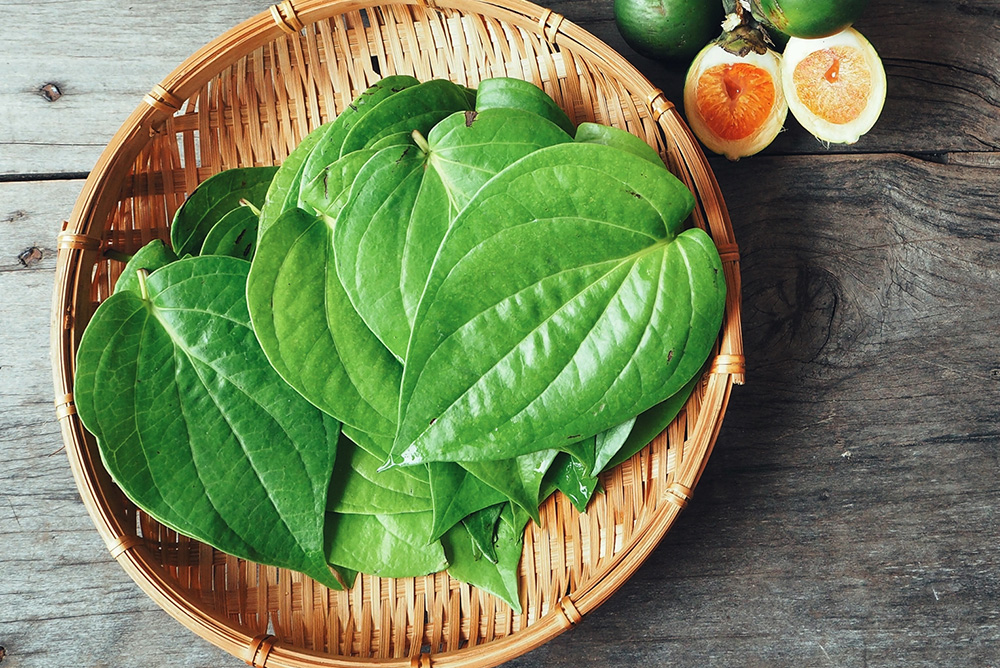
Mainly used for fragrant, yummy wraps and rolls in Vietnamese and Thai cuisine, as well as a weird South Asian chewy snack with areca nut or tobacco. Betel leaves have a sweet, peppery flavour which goes great with grilled meat and seafood. Also packed with antioxidants, vitamins and calcium, with great health benefits.
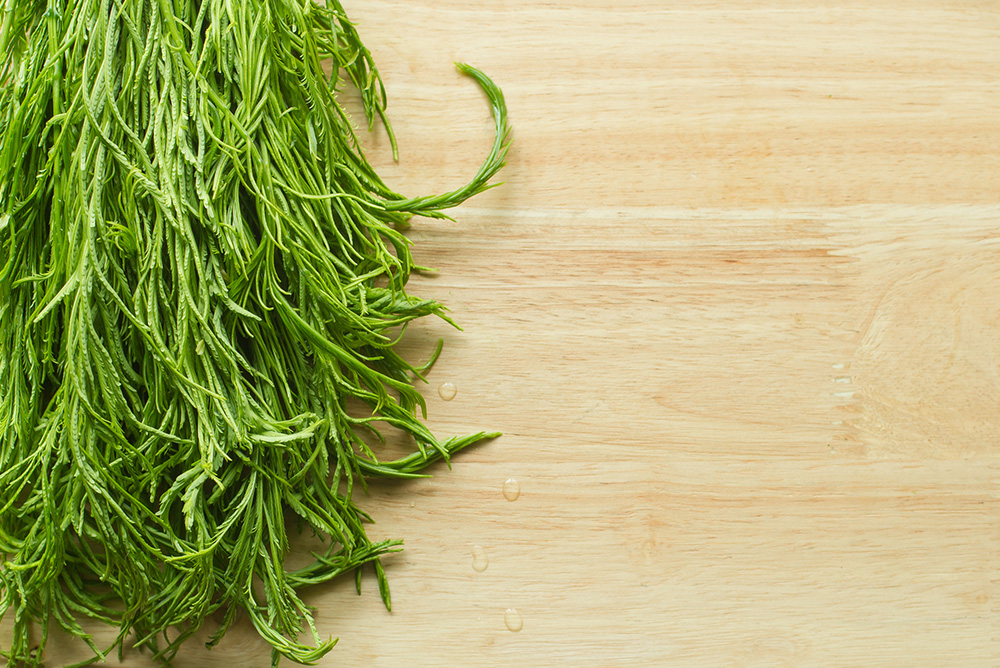
Delicate green shoots with small oval fern-like leaves of the Acacia Pennata herb vegetable native to Southeast Asia. Known as Cha-Om in Thai, and well-loved in Northern Thai, Cambodian, and Laotian cuisines. Don’t be put off by its raw pungent metallic smell. Once cooked, the stink dissipates and turns nutty, warm and fragrant. High in Vitamin A, B and C, calcium, iron, fibre, phosphorus and various beneficial nutrients. Try it in this savoury Thai omelette special!

Lighten your mood and rejuvenate your senses with 6 must-try Malaysian drinks!

Pair your hearty barbecues with these refreshing Asian delights!

What are the properties of ginger, and how to pick, store and use ginger in your cooking? Find out here!